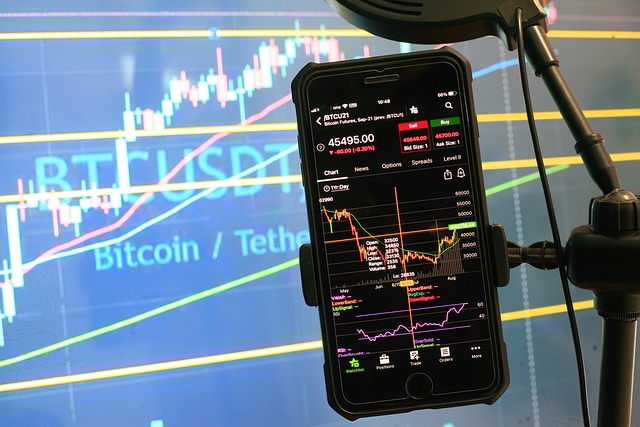Global Access in 2025: Asset Classes, Trading Hours, and Settlement Basics Online
Online markets in 2025 offer unprecedented access to assets across regions and time zones. Knowing when markets open, which instruments fit your goals, and how trades settle can help you plan orders, manage risk, and avoid unexpected delays. This overview explains global trading hours, major asset classes, and settlement timelines in clear terms.

Global market access has expanded rapidly, with platforms connecting individual investors to exchanges and venues around the world. Yet availability does not automatically mean simplicity—time zones, trading sessions, asset rules, and settlement cycles still shape how and when your orders fill and when funds become available again. Understanding these building blocks helps you avoid common pitfalls like placing orders during illiquid periods or misjudging the time it takes to reuse cash after a sale.
Trading online: global market hours
Trading schedules differ by region and product, and they can shift with daylight saving changes. In the United States, core equity hours are generally 9:30–16:00 Eastern Time (ET), with many platforms offering pre‑market and after‑hours sessions where liquidity is thinner and spreads can widen. In Europe, common windows include roughly 8:00–16:30 local time in London and about 9:00–17:30 Central European Time on major continental venues. In Asia-Pacific, several exchanges maintain midday breaks; for example, Tokyo typically operates morning and afternoon sessions.
Foreign exchange (FX) trades nearly 24 hours from Monday to Friday, cycling through Asian, European, and U.S. sessions with overlaps that often see higher activity. Futures on major exchanges are also available for extended hours, sometimes close to 23 hours per day, with short maintenance pauses. Cryptoassets trade continuously, 24/7, which can be convenient but also means price gaps can emerge over weekends in instruments that are closed elsewhere. Always check your platform’s specific session times and holiday calendars in your area, because venue holidays and regional observances affect liquidity even if your account is accessible.
Trading easy: asset classes overview
Choosing instruments starts with understanding how each asset class behaves. Equities and exchange‑traded funds (ETFs) offer diversified or single‑company exposure and typically carry equity‑style settlement. Bonds—government, municipal, and corporate—tend to move on rate and credit expectations and may trade on exchanges or over the counter, depending on the market. Futures and options are derivatives with embedded leverage; they follow exchange rulebooks, margin requirements, and have expiration or delivery provisions that are essential to monitor.
FX provides access to currency pairs such as EUR/USD or USD/JPY and is quoted in pips with lot sizes that vary by account type. Commodities, whether via futures or funds, include energy, metals, and agriculture. Cryptoassets range from large-cap tokens to smaller projects; settlement is native to blockchains, but many investors access exposure through centralized platforms or exchange‑listed products. Keeping Trading easy is about matching product structure—trading hours, margin, and settlement behavior—to your risk tolerance and the timeframe you intend to hold.
Navigating: Trading in 2025 — settlement basics
Settlement is the process of exchanging cash and assets after a trade executes. Many markets now aim for faster cycles. In the United States, most equities, ETFs, corporate bonds, and options settle on T+1, meaning one business day after the trade date. U.S. Treasury securities also follow accelerated timelines. In the European Union and the United Kingdom, many equities still observe T+2. Several other markets have moved to T+1, and some are piloting same‑day models for select instruments. Local practices vary, so confirm the rules for each market you access.
Different products settle differently. Spot FX commonly uses T+2 for institutional settlement (with some pairs at T+1), though many retail accounts provide rolling or cash‑settled exposure rather than physical delivery. Futures are marked to market daily via variation margin, with final cash settlement or physical delivery at contract expiration depending on the contract specs. Options typically settle on T+1 in U.S. markets, with exercise and assignment timelines that can affect when cash or shares move. Crypto transactions settle on‑chain once a block is confirmed; speed depends on the network and fees, and exchange internal transfers can appear immediate but still rely on venue-controlled processes.
Settlement timing affects how quickly proceeds can be reused. Even when buying power updates immediately in a margin account, underlying settlement rules still apply to cash movement. Cash accounts must avoid “free‑riding” by selling shares before the cash from the original purchase settles. For cross‑border trades, consider currency conversion timing and fees. Corporate actions—dividends, rights issues, or stock splits—have record and payment dates that interact with settlement cycles, influencing eligibility. Check your platform’s post‑trade statements to confirm when funds become fully available.
Coordinating hours and settlement reduces friction. For example, pre‑market and after‑hours equity sessions can fill at prices that move again at the main open. Thin liquidity often means larger spreads, which can influence whether a limit order triggers and the final fill price. Around major economic releases, futures and FX liquidity can improve due to global participation, but slippage risk may rise. Align order types—such as limit, stop, or time‑in‑force conditions—with the session you plan to trade, and confirm that the instrument supports those order instructions outside the primary session.
Risk controls tie it all together. Volatility shifts with session overlaps—London and New York hours often concentrate global liquidity in many instruments, while holidays in one region can leave markets quieter. Use time‑zone‑aware alerts, avoid assuming that all venues follow the same holiday calendar, and track daylight saving transitions between hemispheres. Finally, reconcile execution timestamps, settlement dates, and currency conversions on your statements to ensure the lifecycle of each trade matches your plan.
In 2025, global access makes it possible to build diversified portfolios across regions and instruments from a single screen. The key is to map when and where each product trades, understand the settlement path that follows execution, and fit both into your risk and liquidity needs. With those fundamentals in place, you can focus on research and position sizing rather than logistics, even as markets operate around the clock.




